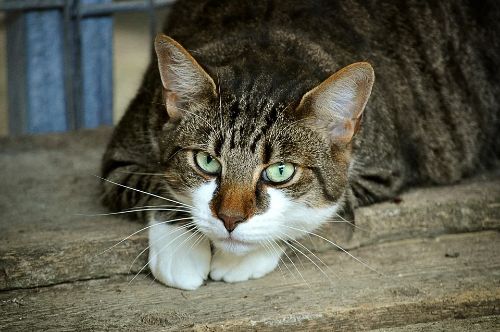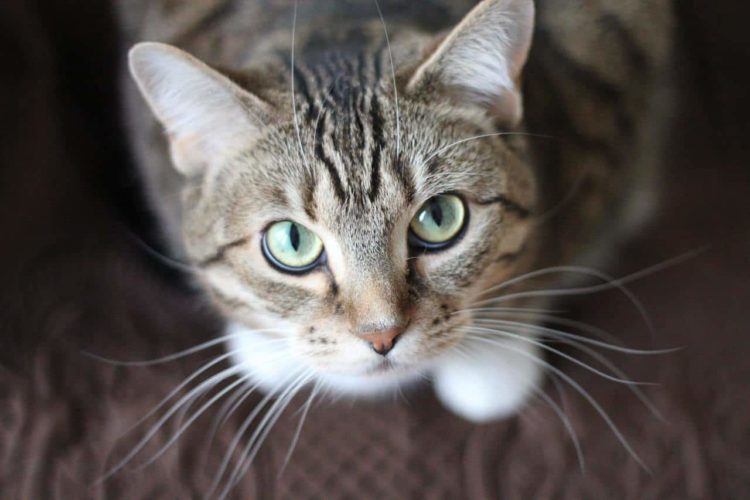As cute as they are, a cat’s whiskers are an important sensory tool that helps them navigate new spaces and stalk prey in the wild. If your cat appears to have unusually long whiskers, they actually don’t! A cat’s whiskers are just as long as they’re supposed to be because they grow to fit the cat’s width.
Whiskers are usually long anyway, but some are longer than others. There’s no “normal” when it comes to whisker length and it really depends solely on the cat! In this post, we’ll explore the core reasons why cats have long whiskers and how they use them to interact with the world around them.
The 5 Reasons Why Cat’s Whiskers Are So Long
1. Whiskers Help Cats Judge Spaces
We all know that cats have an affinity for finding the most compact, most uncomfortable-looking spot possible and squeezing into it. Because whiskers grow to match the width of a cat’s body, they help them to gauge whether or not they can fit into a small or tight space.
This is because whiskers are more sensitive than you may think—they contain sensory cells that let your cat know just by brushing against an object whether or not they’re going to fit. In addition, whiskers help cats navigate their way through new spaces if they do choose to enter them, especially since their long-range vision is pretty limited.
2. Whiskers Help Cats Hunt
In the wild, a cat’s whiskers help them hunt their prey. The sensory cells contained within whiskers are sensitive to the vibrations caused by changes in air currents when something moves. This alerts the cat to nearby prey.
If we consider also that wild and outdoor cats come into contact with a range of obstacles when hunting such as brambles, branches, and overgrowth, it makes sense that whiskers are a great navigational tool for those long nights on the prowl.
3. Whiskers Help Cats Communicate
Another fascinating feature of whiskers is that they help cats express emotions and communicate. The position of the whiskers changes depending on how your cat is feeling.
For example, if a cat feels scared or threatened by something, their whiskers will point toward the source of the threat, whereas relaxed, contented cats let their whiskers droop. If your cat is curious or is tantalized by something—like a bug on the window—their whiskers will lift up.

4. Whiskers Protect Your Cat’s Eyes
Similar to how eyelashes help protect a human’s eyes, whiskers do something similar for cats! If, for example, dust drops onto a cat’s whiskers, the sensory cells within alert your cat to its presence, which prompts them to shake it off.
5. Some Breeds Have Longer Whiskers
Sometimes, having especially long whiskers comes down to what breed your cat is. Long-whiskered breeds include the Maine Coon, Norwegian Forest Cat, Persian, Ragdoll, and the Siberian.
In December 2005, a Maine Coon from Finland by the name of “Missy” entered the Guinness World Records as the cat with the longest whiskers. They measured 19 centimeters(7.5 inches).
Conclusion
A cat’s whiskers should be preserved at all costs. They’re hugely important to how cats interact with the big wide world—protecting them from foreign objects, alerting them to danger, and helping them survive in the wild. For that reason, you should never cut or trim your cat’s whiskers. They’re exactly as long as nature intended them to be!
Featured Image Credit: Pexels














